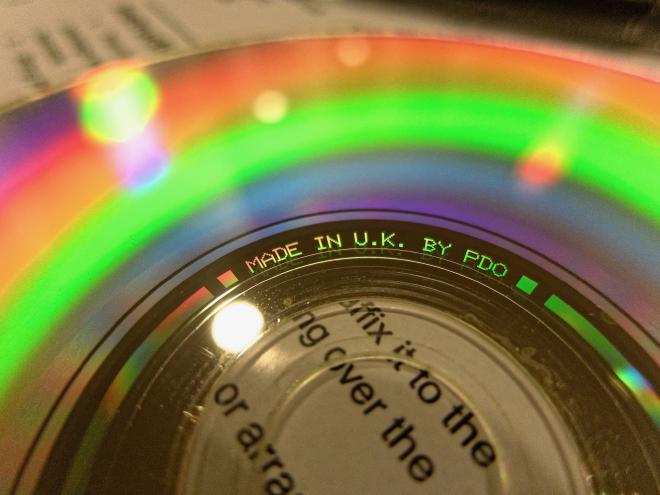Kanto YU2

A while back I realized that I spent most of my time listening to music on my desktop speakers while working. The speakers were an old system from Cambridge Soundworks, a local company back when I lived in Cambridge MA. The company had been founded by Henry Kloss, an audio engineer who had also founded KLH and Acoustic Research. Their business model had been midrange to high quality at bargain prices via direct sales, until Kloss died and the assets were bought up by Creative Technology for use in PC speakers.
Anyway, the speakers I had were small desktop satellite units with an attached subwoofer. Sound was generally good, but the main thing I noticed was that given something with a massively complicated midrange — like heavy rock with layers of electric guitar through distortion filters — everything tended to turn into a big mess.
I did a bunch of research and settled on some candidate systems. The main constraint was that I needed the speakers to fit reasonably on a desktop, and I strongly suspected that I needed them to have a subwoofer with a proper crossover frequency setting.
I looked at AudioEngine. They’re local to Austin, and people rave about their A2+ speakers. However, reviews suggested that for what I wanted, a better option might be the YU2 speakers from Canadian company Kanto Audio. Reviews said that AudioEngine really pushed the bass on their speakers, on the assumption that you wouldn’t use a subwoofer, resulting in a more unbalanced sound than the Kanto.
But with hi-fi equipment, reviews can only take you so far. Back in the 90s I was looking to buy a midrange CD player, and had settled on Denon as a likely option. At the time Denon had two models of CD player which were almost identical — same controls, same analogue circuits, the only difference was the D/A converter: one was bitstream 1-bit DAC, the other multibit. (Specifically, 20 bit DAC with oversampling and quadratic interpolation.)
It turned out that the DAC made a massive difference to the sound. While both were good, the bitstream player was very restrained and even in its reproduction, whereas the multibit was capable of a much more aggressive sound, particularly in the bass range. For the music I listen to, this made multibit a clear winner. A studio might want accuracy, but the listener wants… well, fun!
Back to the present, and I was determined that my new desktop speakers would be my last, so I wanted to do some in-person testing to make sure they would be good enough and a big enough improvement over my old speakers to be worth the cash. Happily, Austin still has a number of specialist hi-fi stores. One had both Kanto and AudioEngine hardware, and an espresso bar, so we dropped in to check it out.
The main focus of Sound Gallery turned out to be vinyl LPs and classic hardware, often through valve amps. Just inside the door they had a big testing board where you could plug in your valves to check that they were good. Uh, yeah.
Anyway, I listened to some Vangelis on vinyl, and discovered that the noise of dust on vinyl still annoys me as much as it did in 1985. Next I had one of the store guys find me a suitable cable, so I could plug my phone in to the Kanto speakers. Audiophiles may cringe at that statement, but the iPhone audio adapter actually has an amazingly flat frequency response and low harmonic distortion.
I’d picked out some test tracks in FLAC format. The first was something by Moby and the Void Pacific Choir, chosen for having the kind of layered wall of sound that made my current speakers give up and pump out a mess. With the Kantos, I could hear everything clearly. A pass! The second track was A Mile Long Lump of Lard by The Orb, chosen because (like many Orb tracks) about half of the activity happens below 100Hz. Sure enough it was a shadow of its true form, so I knew I was going to need the SUB6 subwoofer.
We tried a few more test tracks and were amazed by the speakers’ general ability to resolve spacious detail, and then I did my bit for the local economy. I want specialist hi-fi shops to stick around, and that means buying from them rather than showrooming. But hey, if you want to buy from Amazon because there aren’t any hi-fi stores near you, there are some links from this article.
The Kanto speakers lack the Bluetooth feature of some small speakers. Bluetooth audio is MPEG compressed — even aptX — so in my view it’s a waste of time to spend serious money on speakers and then use Bluetooth to listen to music on them. If you really want to, you could always pick up a Bluetooth audio receiver and plug it in via the AUX jack. Or get an Apple Airplay receiver and connect to it over Wi-Fi — Airplay Wi-Fi streaming is lossless, using ALAC compression.
Bitstream vs multibit for CD players isn’t really an issue anymore. These days you only need the CD player to read the disc and spit out the data accurately; the data goes down an optical cable to your receiver, and the receiver does the D/A conversion. Similarly, the Kanto speakers plug in as a USB audio device (no special driver required); the computer sends them raw audio data, and they use their built-in Texas Instruments Burr-Brown DAC to decode. Burr-Brown is pretty much the standard vendor for high quality multibit DACs; you’ll also find them in flagship receivers from Denon, Pioneer, Yamaha and Onkyo, for example.